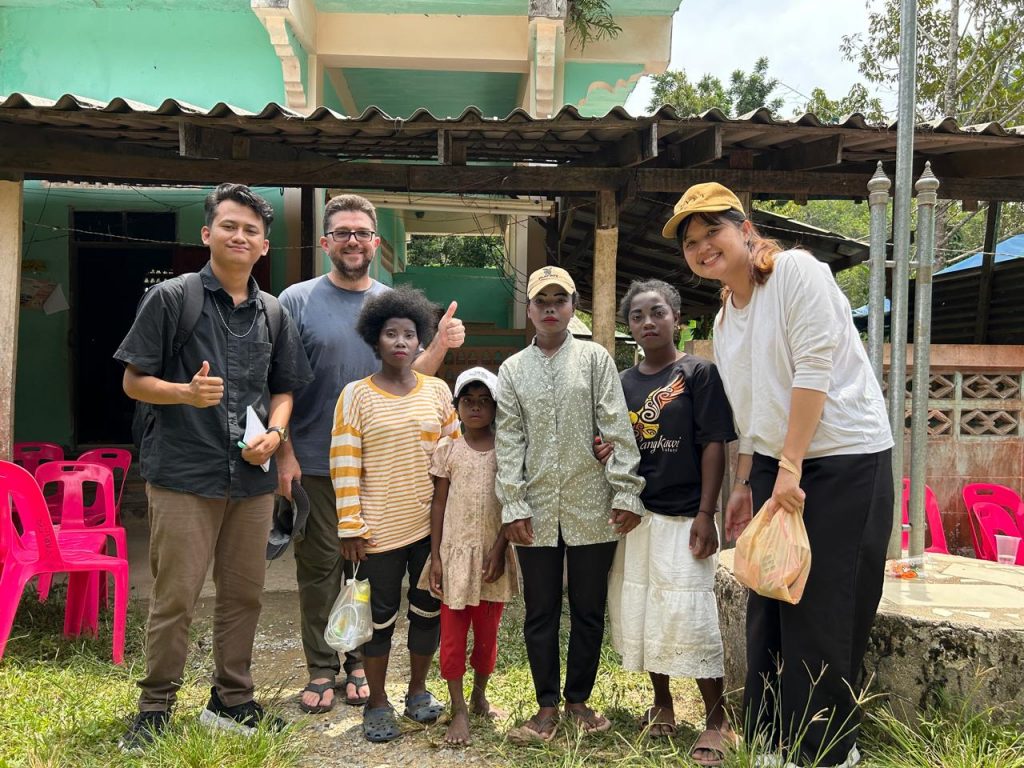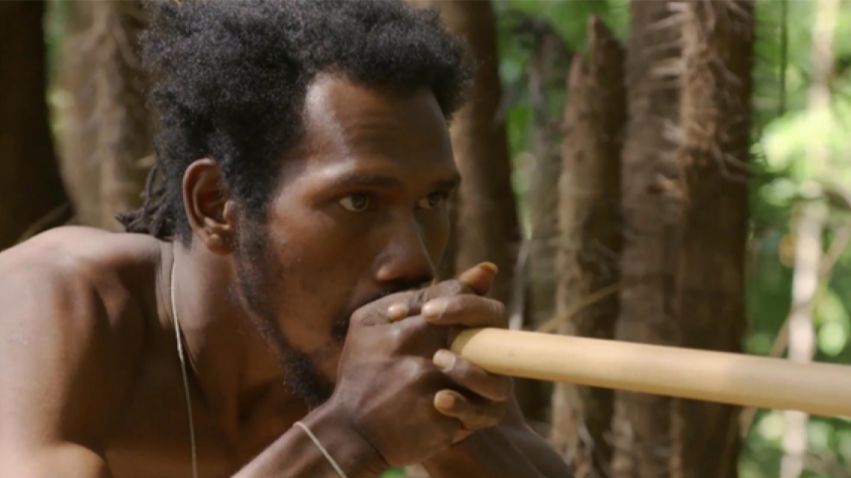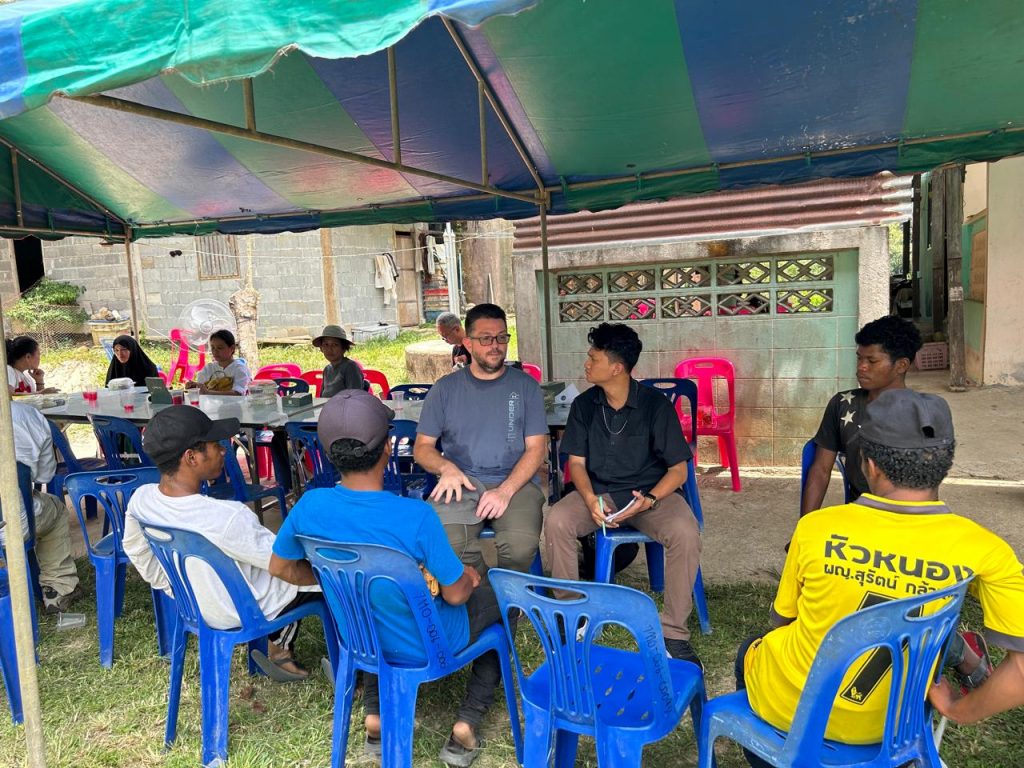
On July 26, 2024, the Social Innovation Center for Local Governance and Sustainable Development (SLS), Faculty of Political Science, Prince of Songkla University, Pattani Campus, organized a visit to the place where the JaHai ethnic tribe lives, precisely in the forest of Sri Sakhon, Narathiwat, Southern Thailand. Dr. Netdao Yangyubon, head of SLS and lecturer at Prince of Songkla University, and friends led the visit. They started the journey from Prince of Songkla University in the morning and took about 2-3 hours. The visit aimed to research in-depth information about the JaHai tribe. Some of the important information we got was about where they came from, how they survived, their habits, and so on.
Based on information, the JaHai Ethnic tribe has existed since about 50,000 years ago, they came from the African continent, when the ice melted in ancient times, and people from the African continent began to explore the world in search of a new life including Southeast Asia, South Thailand and Malaysia are examples of countries visited by them. Until now, their population in the forests of Southern Thailand is around 300-500 people, while in the forests of Malaysia this ethnic population still totals around 2000 people. Local people call them Orang Asli or Jahai, but they refer to themselves as “Menrak”, which means human. They speak their own “Menrak” language and also use Malay.
In the past, they lived nomadically ate yam as their staple food, and lived as a large group, but over time, they have now experienced difficulties caused by several factors such as the destruction of the forest by the Bang Lang dam, the lack of official Thai identification, knowledge of the law, and yam being replaced by rice. This forced them to readjust their organizational structure. Due to the difficulty of finding food in a large group, there are now separate 9 JaHai community groups in this forested region of Southern Thailand. Every day they hunt to fulfill their food needs using “Blowgun” weapons containing venomous needles obtained from trees. Mr. Padprik (JaHai chief) said that they usually hunt using blowguns secretly, after getting the game they will remove the poisoned parts of the animal and clean it before cooking and eating it. They hunt any animal they find, but their favorites are langurs (little monkeys) and rats, which they make into soup and love for its deliciousness. Aside from hunting, many of them now work on local farms as their main source of livelihood in Narathiwat to fulfill the needs of their large group such as rice, water, etc.


Apart from being rich in fauna, the vast forests in the area where the Jahai tribe lives are also rich in flora, including mangosteen and durian, this fruit is very much found throughout this forest area, during the harvest season they take these durians to be eaten and even sold. There are so many durians in the forest that it takes several trucks and baskets to collect them.

At the same time of the visit, there was an American researcher named Justin Weinstock and the local provincial government who were meeting with the JaHai people and local residents. They discussed plans for the advancement of the JaHai people such as water supply, ID cards, land, education, and others. According to the author, this is very beneficial for the beginning of changes in the survival of the JaHai tribe for the better considering that they need attention from the central government, the JaHai tribe living in the Malaysian jungle has received a lot of assistance from the Malaysian central government, now it is the turn of the Thai government to show their concern for the welfare of this historic ethnic group.

Keywords : JaHai, Political Science, Anthropology, Narathiwat, Southern Thailand
Author : Dayandri Trisatya Fatanabullah as an intern student from State University of Malang under the supervision of
Dr. Netdao Yangyubon, Faculty of Political Science, Prince of Songkla University, Pattani Campus
Reviewer : Dewi Indah Berliana, Phonpimon Bang-ngoen